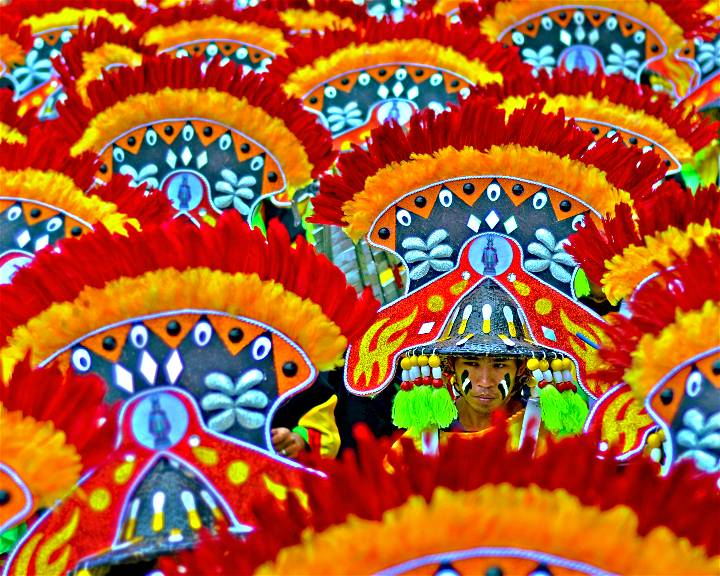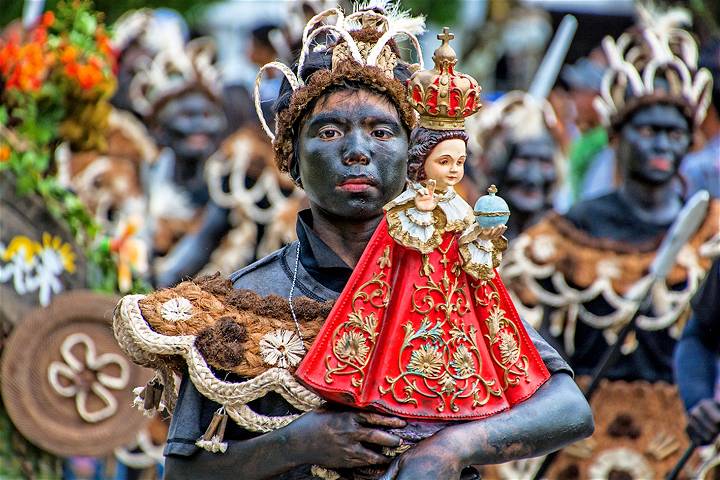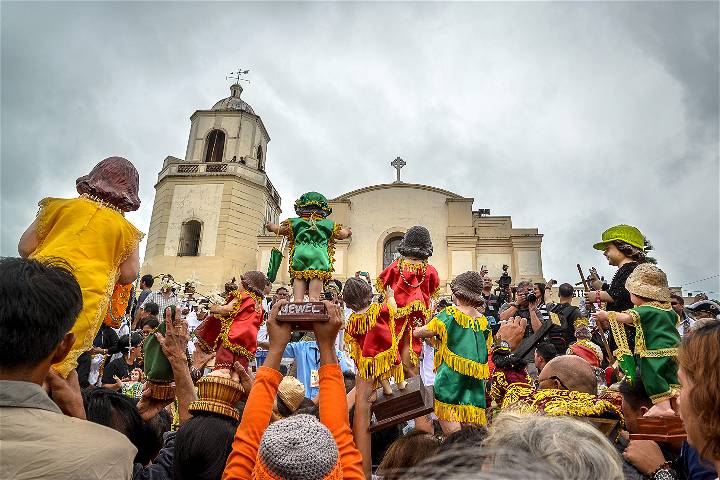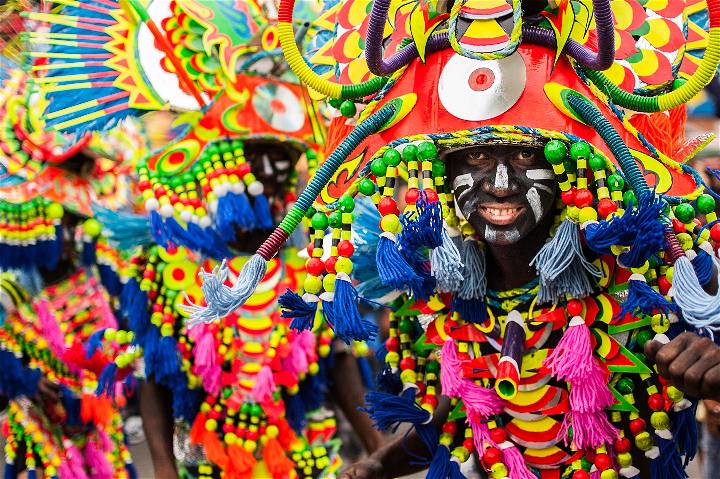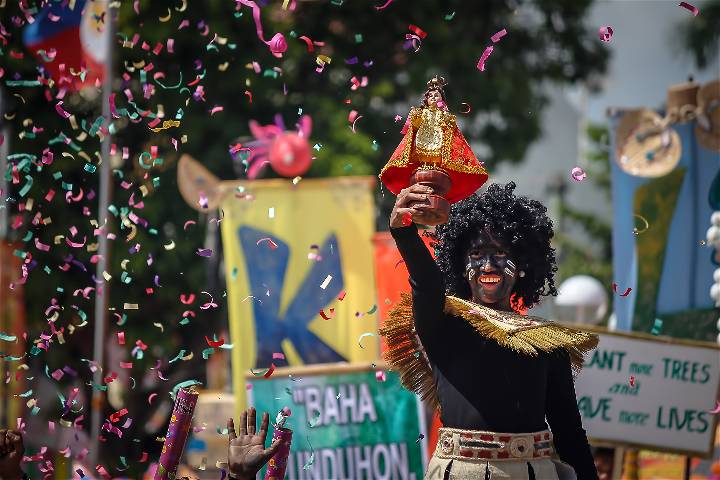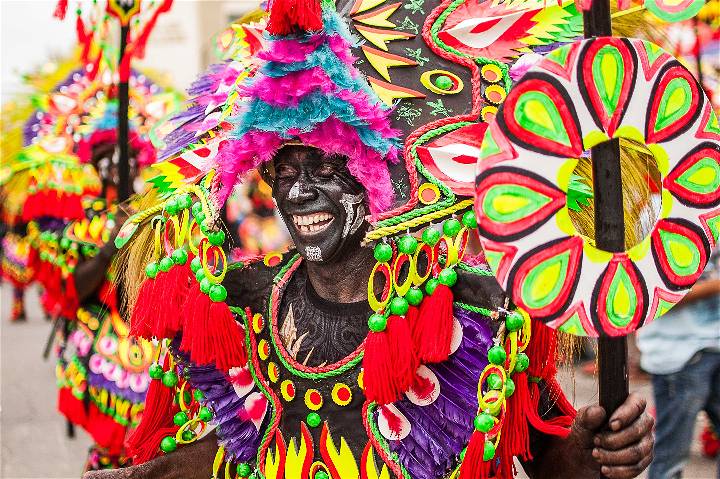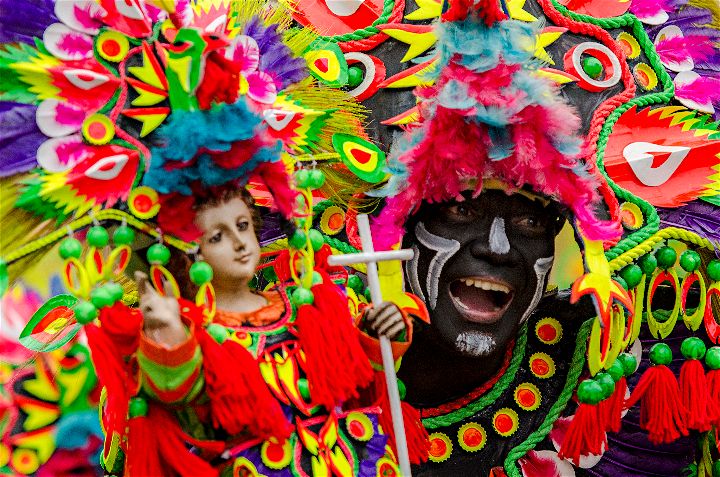The body paints, the beating drums, the extravagant costumes, the feast, the explosion of colors, and the people. The amass of wide-eyed, wound up, joyous people. These are some visuals that first come to mind at the mention of Philippine Festivals. What can I say—always the cheerful, Filipinos just seem to have the innate ability to find a reason to celebrate. And the world knows us for it.
Among the top Philippine festivals—and quite the inimitable—is the vibrant, exotic, and world-famous festival, Ati-Atihan. Dubbed as the “granddaddy” of all Philippine Festivals by Lonely Planet, Ati-Atihan is a well-attended celebration not just by Filipinos, but by tourists from all around the world.
Happening on the third week of January 2016, we give you 5 awesome things you’ll miss if you pass up going to Kalibo, Aklan’s ever epic Ati-Atihan Festival.
5. A place in history
This 800 year old festival dates back to the 13th century. This was a practice started out by Malay immigrants, where they painted their faces black while performing songs and dances in regard to the Ati people who lived in the area. During the Spanish rule, however, Sto. Niños were added to the traditional practice, giving birth to the Ati-Atihan Festival now as we know it.
And so, know that every time you attend the Ati-Atihan, you are carrying on a wonderful piece of history. You are taking part in an age old tradition that centers on generosity, gratitude, and friendship between two cultures.
4. A chance to partake in popular festival beliefs
If you see a seminarian patting a small Sto. Niño statue on a person’s body, get in line. This practice is called the “paeapak”— a religious tradition where an image of a Sto. Niño is massaged on to a person’s head and torso. It is believed that this can heal illnesses and revitalize one’s spirit. The part of the Sto. Niño statue used to touch people’s body is the feet, hence the term “paeapak” or “paapak” in Tagalog which means “to step on.”
Whether you are Catholic, superstitious, a huge believer, or none of those, it still doesn’t hurt to fall in line and follow traditions as faithful locals would. After all, as been said many times, Ati-Atihan is not a festival you attend to simply be an observer. This is the kind of festival that whisks you away into its delightful chaos, and the only way to fully enjoy it is to surrender yourself to the joyful madness of it all.
3. Live performances by some of the country’s hottest bands
During the week-long fest, stages are scattered all around town. Once you’re tired of roaming the streets and feel the need to take a break, kick back and grab a beer or two while watching some local and big OPM bands ignite the fest further with their music.
You might ask: why would I go see a band I can watch in Manila when I am in Ati-Atihan? Exactly that. You are in Ati-Atihan. There, nothing is ordinary. Everything is electrified. The extraordinary energy and wild happiness the people bring to the festival are what make it the epic celebration that it is. Watching your favorite bands here won’t be the same as watching them in a hip bar in Manila.
2. The festival parades and the iconic “Sadsad”
What is Ati-Atihan without the street party and the parades? What makes the festival truly unique is the “sadsad” or street dancing that is a form of praise and thanksgiving. For others, it’s also a way of asking for blessings. During the sadsad, anyone can join. Festival goers take to the streets smeared in soot and body paints for the street dance from morning till the evening, and afterwards capping the day off with parties that last till dawn. This is the normal routine everyday for the entire week of the festival, growing more and more intense towards the last three days.
1. The stories and surprises you’ll make for yourself
Perhaps you’re an introvert, but at the Ati-Atihan find yourself partying with strangers and actually discovering it to be quite fun. Or perhaps you’re someone who can’t dance, but there suddenly realizing that dancing is really just about going with the flow. Or, even better, perhaps in Ati-Atihan you’ll stumble upon encounters, things, stories, or people that will forever change the way you see things. Either way, you’ll never get the remote chance of having these remarkable experiences happen to you if you simply don’t go.
Epic experiences have, so many times, begun with a single plane ride. Let this be yours.
Festivals portray a big part in Philippine culture. And though we dress ourselves in lavish costumes in these festivals, these feasts won’t still be the eclectic experiences they are without the people coming to celebrate them. At the root of it all, you’ll find it’s the people. The people are the festival.
Hala bira! Pwera Pasma! Let this be your grand welcome into the New Year. Don’t miss the chance to witness the Ati-Atihan Festival come January 2016. For affordable flights and ticket promos, check out 2016 Ati-Atihan Festival’s Official Airline Partner, Philippines AirAsia, at www.airasia.com and at facebook.com/AirAsiaPhilippines.
For more information about Kalibo’s annual Ati-Atihan Festival, visit www.kaliboatiatihan.ph.

